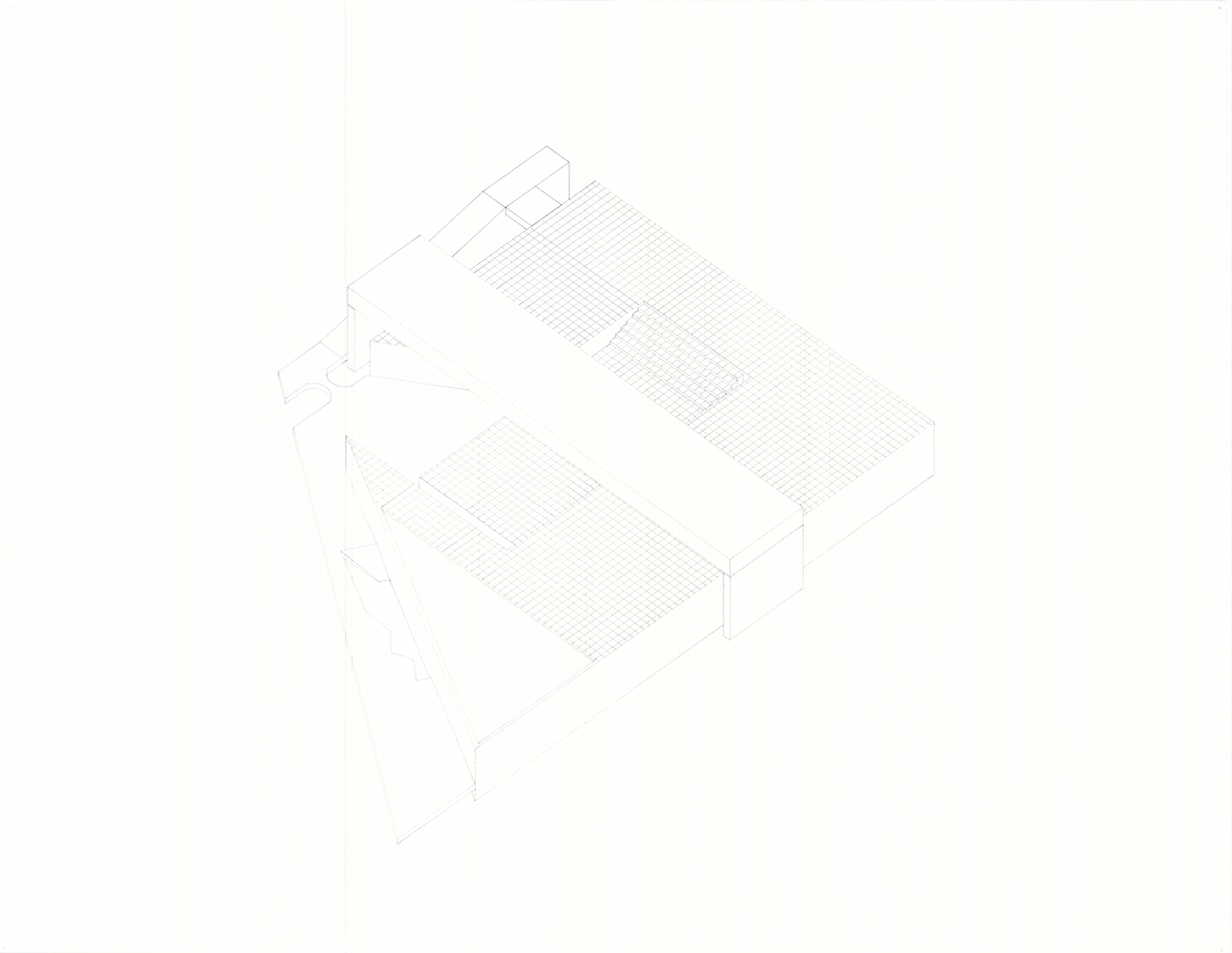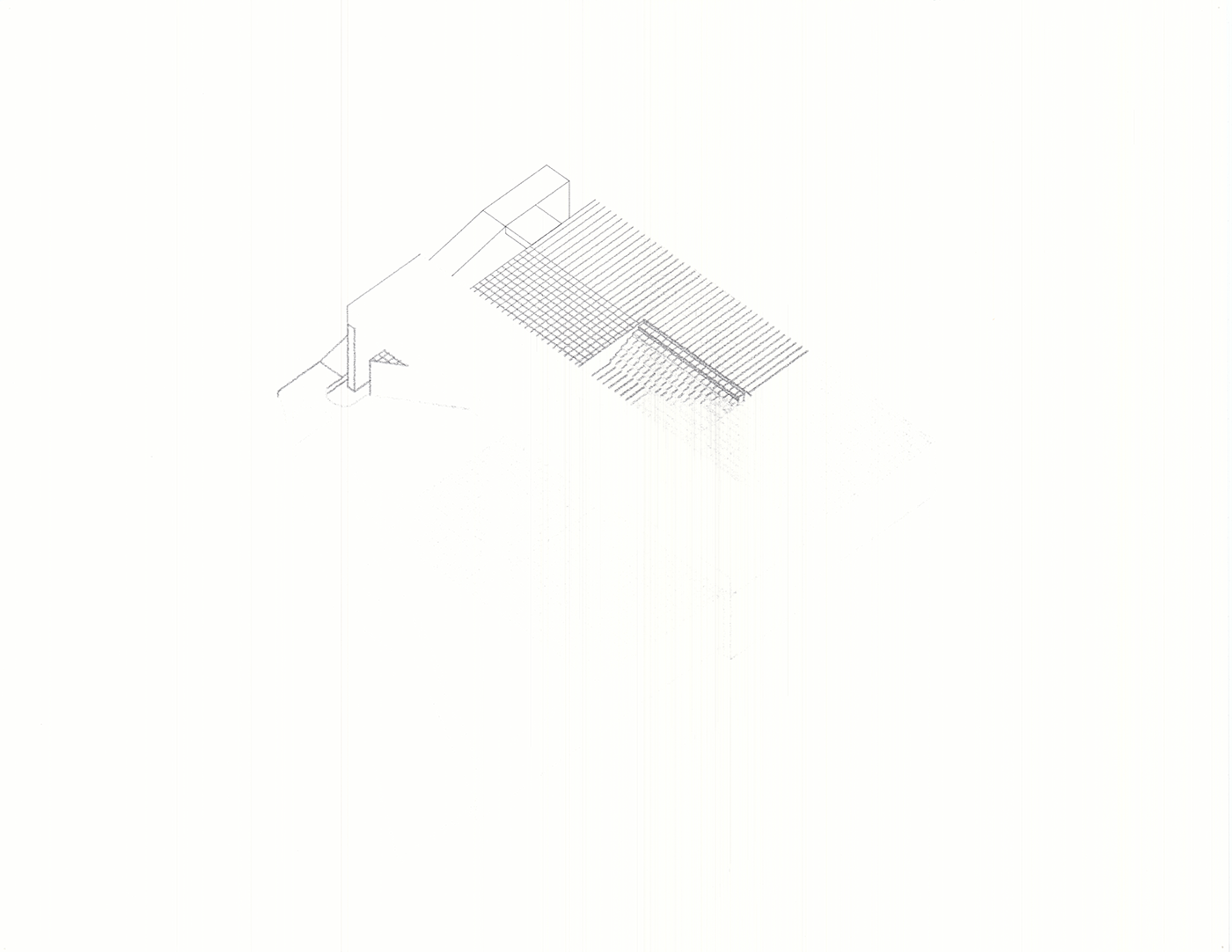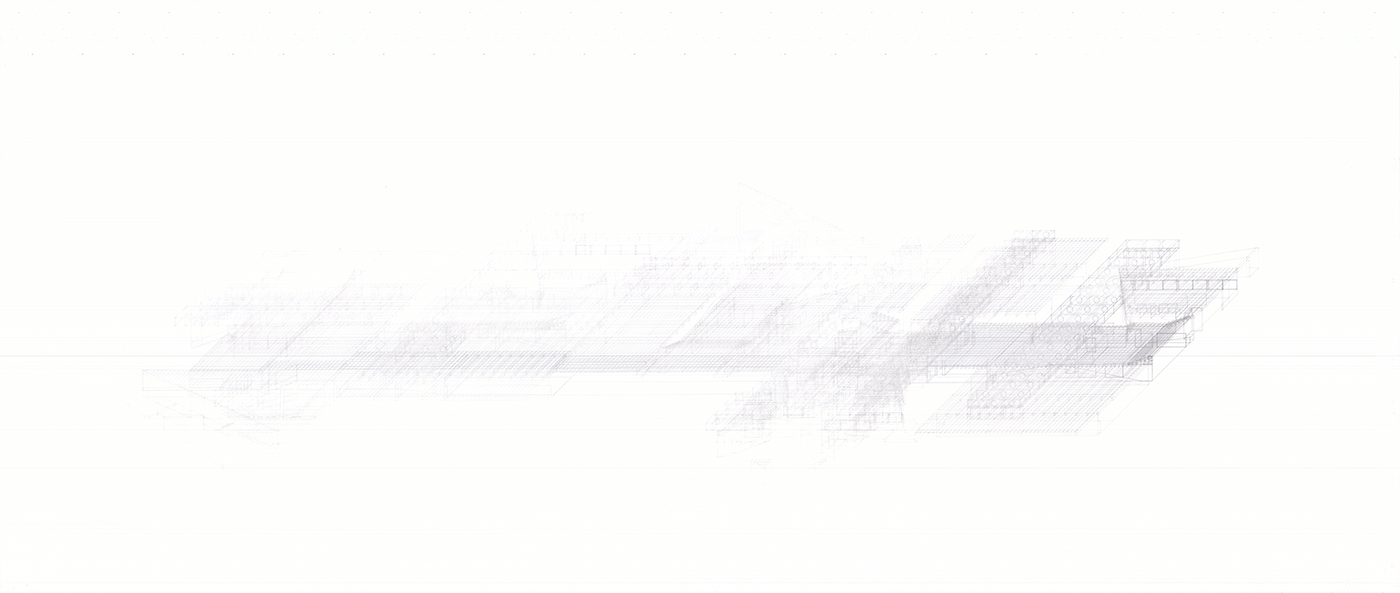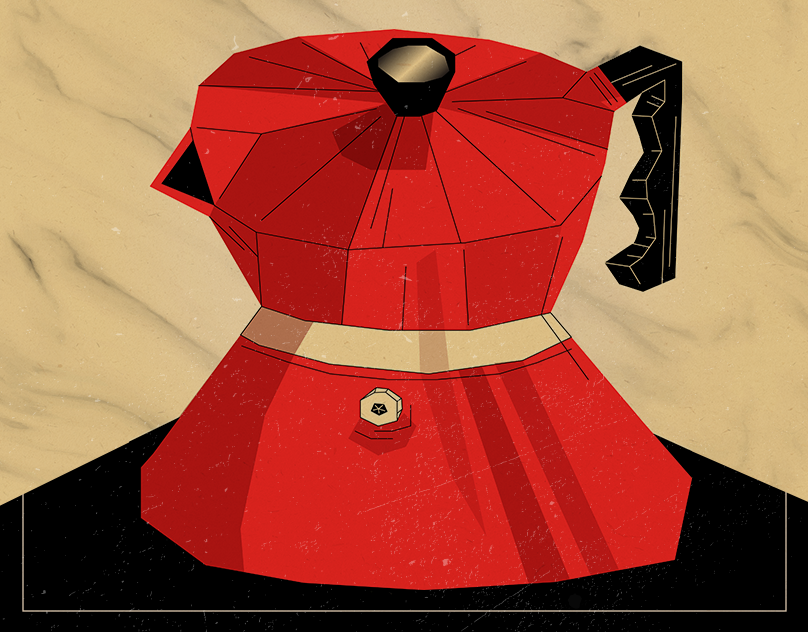The following represent a body of analytical drawings investigating Paulo Mendes da Rocha's Museu Brasileiro de Escultura in São Paulo. All the drawings were measured and relied on found sections and plans of the building, using photographs as occasional supplement. (Please excuse the scratches (long vertical or horizontal lines through the drawings) left by the scanner.)

This hand-drafted x-ray sectional oblique was one of the preliminary drawings done for the series. Through the process of drawing an initial understanding of the building was gathered. The goal here was to depict the main masses of the building and indicate some of the interior spaces through the use of dashed line.
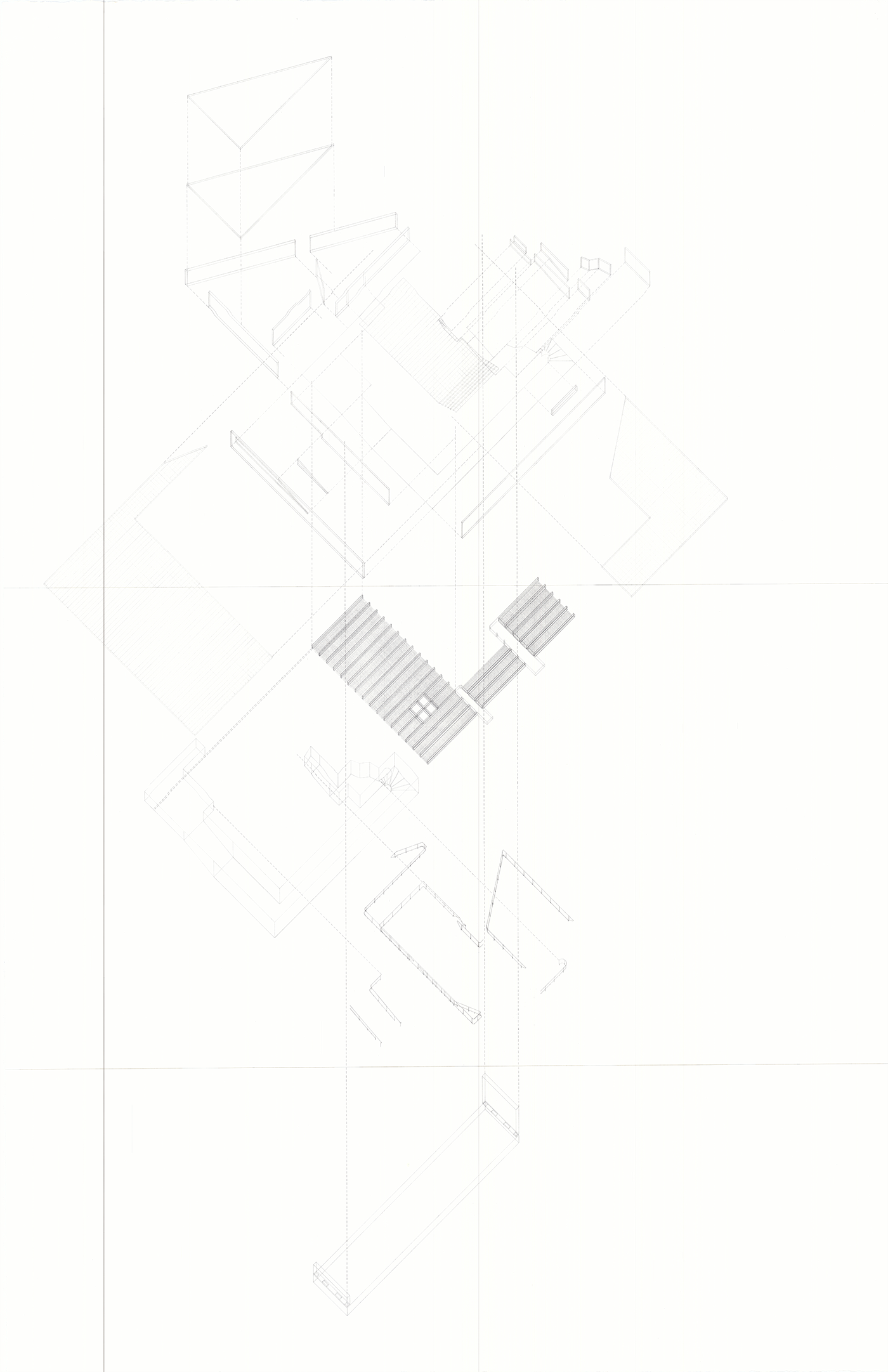
This hand-drafted exploded x-ray axonometric represents the beginning of the second stage of the series. MuBE contains a complex spatial sequence and this drawing aims to reveal that sequence through the act of explosion. One specific path of circulation was chosen; from there walls were pulled away from that path, but their spacing was preserved to indicate the true narrowness and spaciousness of different corridors. The beams and girders of the path were exploded downward and the ceiling grating was rendered to provide an understanding of the overhead condition. Additionally, the railings along the path were shifted down to demonstrate where the edge of the path was defined by that railing, rather than wall. The void of the below-ground circulation was also pulled out to show the relationship between floor and ceiling that was obfuscated by the explosion of the ceiling from the path. Finally, the large 'bar' that looms over much of the outdoor space of the building was pulled downward and rendered in worms-eye view in order to depict it more closely to how it would be experienced by an occupant on the path.
Elements not connected or conceptually related to the path were more fully exploded.

This digital worms-eye exploded axonometric further explored the sinuous circulatory sequence of MuBE. Here the path was made linear, while preserving the spatial relationship between ceiling and ground to give a more explicit understanding of the vertical spatial condition. All other elements were completely exploded.
The following twelve drawings represent the final stage of the MuBE series. The first eleven drawings explore the material condition and erosion of MuBE. A vinyl cutter rendered the drawings and was jerry-rigged to allow the use of graphite as medium. A massing drawing was drawn by the machine using graphites of different hardness. The drawings below are ordered as follows: 10H, 8H, 6H, 4H, 2H, F, HB, 2B, 4B, 6B, 8B. The first few drawings were too light to be captured by the scanner, and the last few were done with graphites so soft that they were completely used up before the drawing had been completed. The twelfth drawing also made use of the vinyl cutter. Here some of the previous drawings were explored further. In this drawing the circulatory path of MuBE was made fully linear. Different graphites were used to indicate the path's depth within the building.







